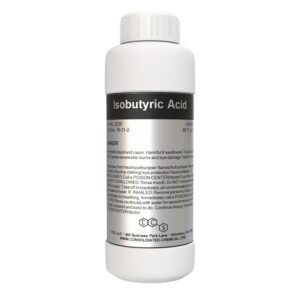Description
Rhodinol is a premium-quality natural compound derived from essential oils, celebrated for its distinct sweet and floral aroma. It is widely used in the fragrance and flavor industries for its ability to impart a rose-like note to perfumes, cosmetics, and flavoring products. Its versatile applications make it an essential ingredient for professionals in perfumery, food flavoring, and chemical research.
Applications of Rhodinol
Fragrance Industry
- Core ingredient in perfumes, body sprays, and soaps for its floral, rose-like scent.
- Enhances the fragrance of natural and eco-friendly products.
Flavor Industry
- Adds subtle rose-like sweetness to confectionery, beverages, and gourmet foods.
- Used in trace amounts for natural flavoring.
Aromatherapy
- Provides calming and uplifting effects in diffusers, candles, and massage oils.
- Common in relaxation and stress-relief products.
Personal Care and Cosmetics
- Adds a luxurious scent to deodorants, creams, and hair care products.
- Ideal for premium, rose-themed personal care lines.
Household Products
- Freshens cleaning agents, detergents, room sprays, and candles.
- Enhances eco-friendly home product scents.
Research and Development
- Studied in fragrance, flavor, and essential oil chemistry.
- Used to develop natural and synthetic aroma compounds.
Industrial Use
- Serves as a fragrance and flavor intermediate in manufacturing processes.
Storage:
- Temperature:
- Store at a controlled room temperature between 15°C and 25°C (59°F to 77°F).
- Environment:
- Keep in a cool, dry, and well-ventilated area.
- Container:
- Store in a tightly sealed, chemical-resistant container.
- Use opaque or UV-resistant containers to protect against light exposure.
- Avoid Contamination:
- Keep away from incompatible substances, such as strong acids, bases, and oxidizing agents.
Handling:
- Personal Protective Equipment (PPE):
- Wear gloves, safety goggles, and protective clothing to avoid skin and eye contact.
- Ventilation:
- Work in a well-ventilated area or under a fume hood to minimize inhalation of vapors.
- Hygiene Practices:
- Wash hands thoroughly after handling.
- Avoid eating, drinking, or smoking while working with the product.
- Spill Management:
- In case of spills, use an inert absorbent material (e.g., sand, vermiculite) to clean up.
- Dispose of waste in accordance with local, state, and federal regulations.
- Disposal:
- Follow environmental and hazardous waste disposal regulations for safe disposal.















